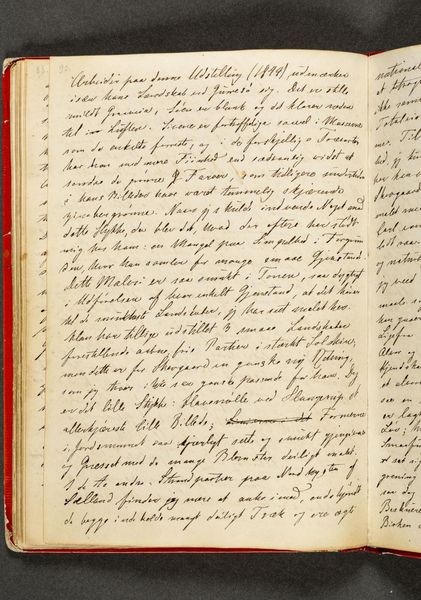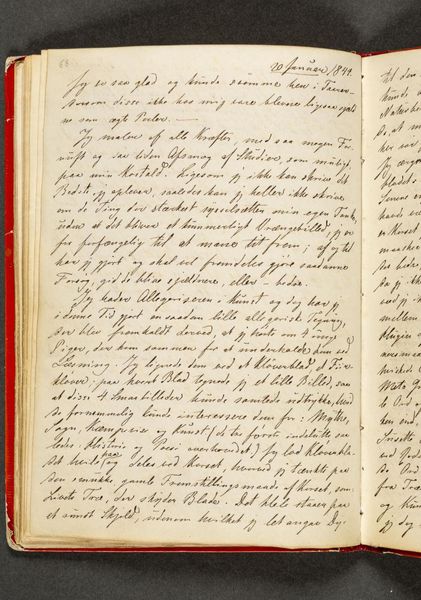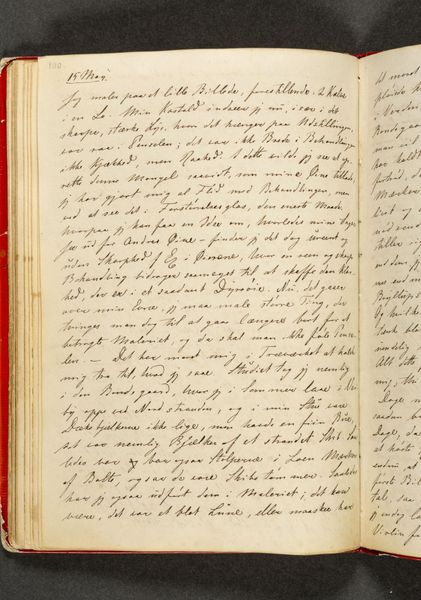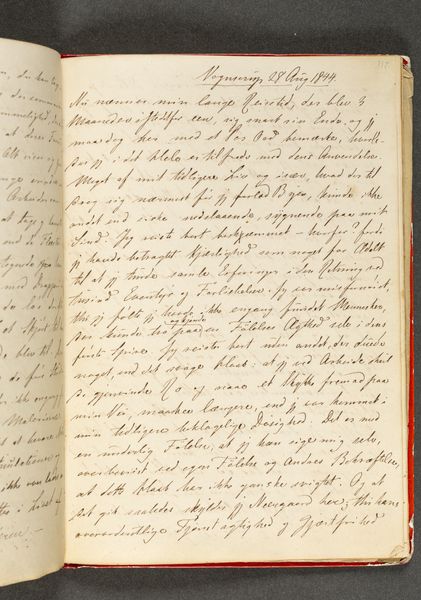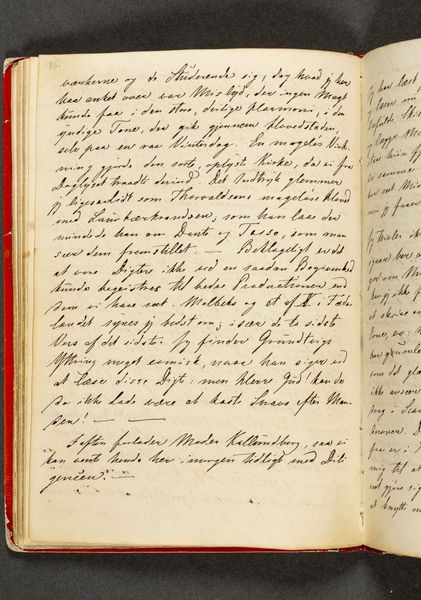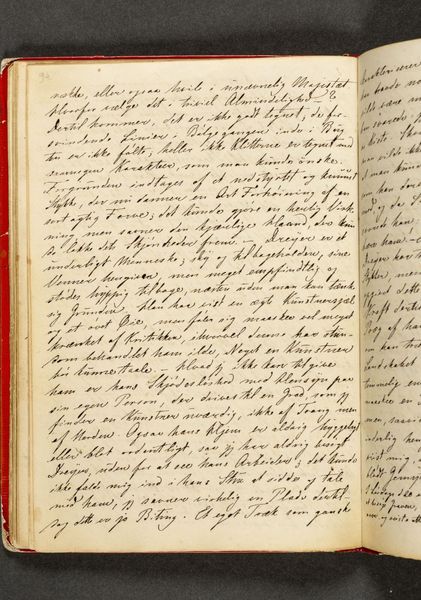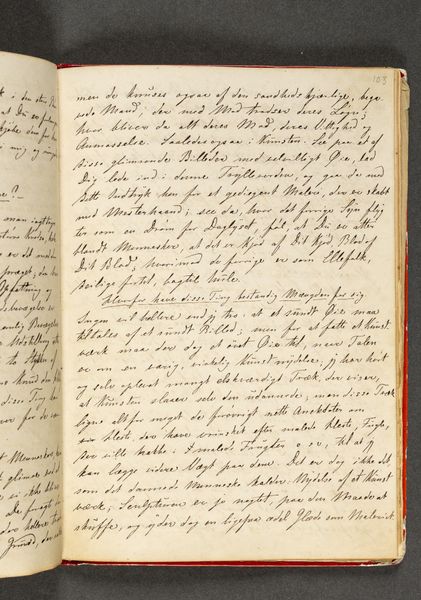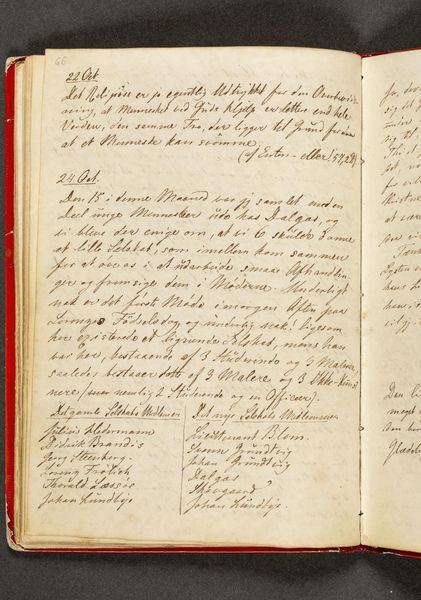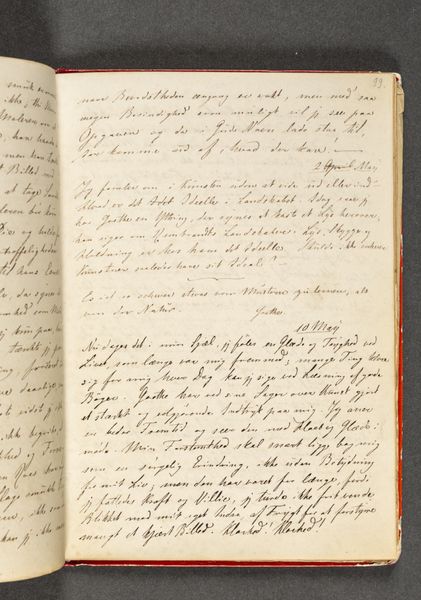
drawing, paper, pen
#
drawing
#
narrative-art
#
paper
#
romanticism
#
pen
Dimensions: 192 mm (height) x 133 mm (width) (bladmaal)
Curator: Today, we're examining "Dagbog. Side 64" by Johan Thomas Lundbye, created in 1843. It’s currently held at the SMK, Statens Museum for Kunst. This page, pulled from a diary, features a meticulously rendered script using pen on paper. The artistry here resides less in imagery, but instead relies on storytelling in this handwritten format. What’s your immediate impression? Editor: The visual density is captivating; closely packed lines and words. While I can't decipher the text without translation, the very act of writing itself communicates so much about its creation, and about Danish culture more widely, during a very specific historical moment. Curator: Lundbye was deeply connected to his materials and artistic process. Diaries such as this exemplify the intimate labor involved. Each stroke of the pen, the texture of the paper, becomes a tangible record of its historical and cultural conditions and formations. Editor: Absolutely. And it prompts me to think about access to literacy and the class dynamics at play here, like, who was afforded this kind of written expression at the time, and the broader social function this journaling may have served for a particular section of Danish society? It would also be interesting to think about questions related to gender, too. Curator: The drawing as a whole belongs to Romanticism. Through journaling and similar artistic and literal means, there was value given to conveying internal worlds. We can even examine ink production or paper manufacturing, to appreciate more of its time, the technology available, and labor involved in the creation of such intimate artwork. Editor: It underlines the deeply personal interwoven within larger structures of power and economy. This isn’t merely about an individual artist's output but highlights cultural contexts where identities and social classes played critical roles in artistic output. Curator: Studying Lundbye’s method can further deepen our connection to art history, as we are not only appreciating artistic skill, but we're also able to acknowledge the socio-economic factors. Editor: These diaries are historical documents and creative expressions. Approaching it in that context allows for a much wider discussion beyond the purely art historical; opening dialogues on themes of personhood and social stratification. Curator: A fruitful reflection. Let's encourage our audience to appreciate that artwork as a blend of intimate skill, meticulous work, with layered contexts from Romanticism to penmanship practices. Editor: And also as the artist as an artisan embedded within a network of gendered, racialized and classed systems of privilege.
Comments
No comments
Be the first to comment and join the conversation on the ultimate creative platform.
